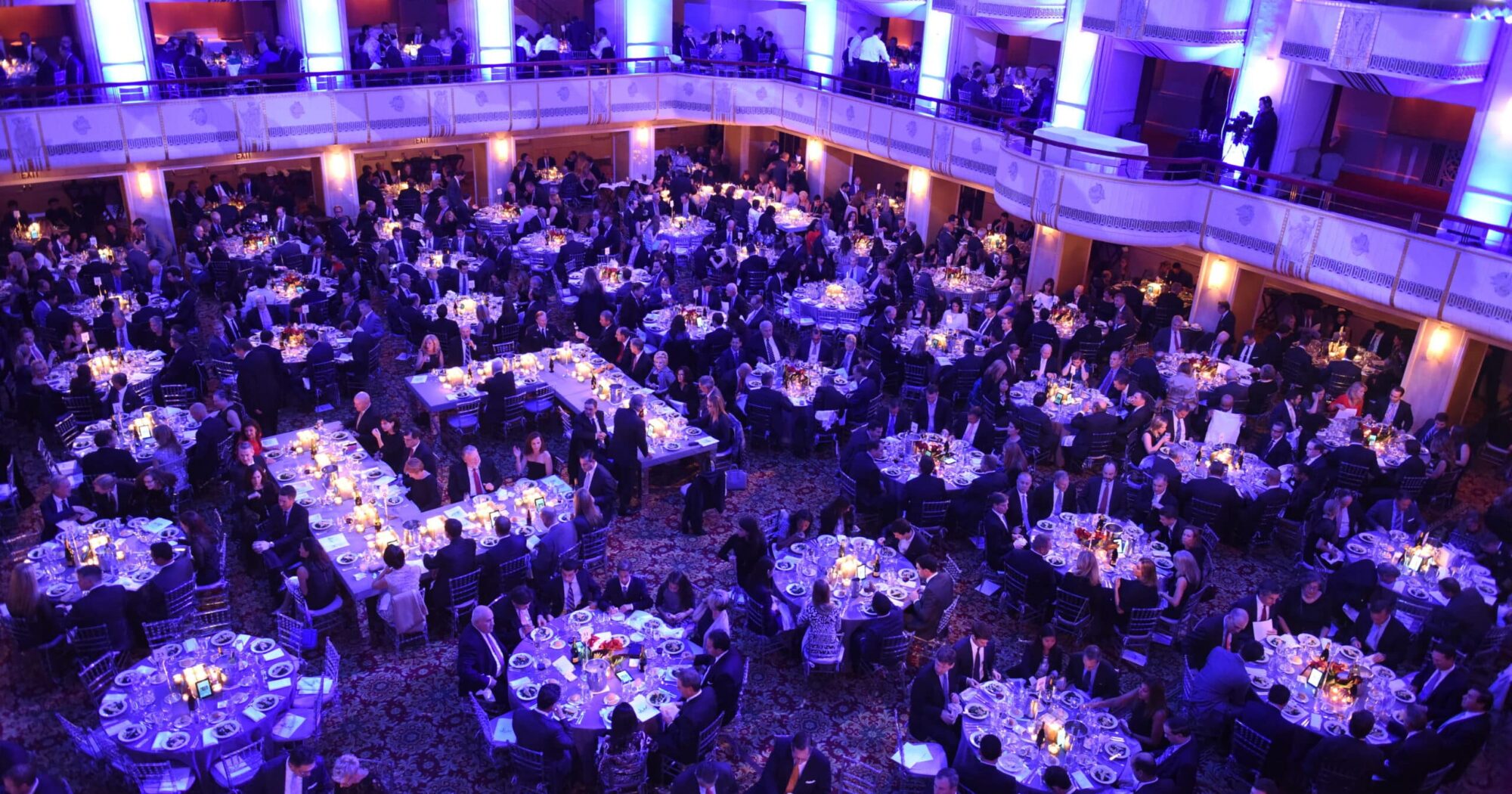Thought Leadership
To Gala…or not to Gala?

“Are galas dead?”
This question was asked to me recently by a colleague who leads fundraising for a major NYC nonprofit. A gutsy question from someone whose career has been marked by some incredibly successful galas over the years. And it’s not the first time I’ve heard it since the fundraising world has turned upside-down. From where I sit at the head of a marketing agency that works with top nonprofit organizations, I’ve heard whispers from development officers asking similar questions about the efficacy of legacy fundraising activities.
Why the Change?
These whispers (or wails, depending on where someone is within the gala planning cycle) are driven by trendlines that pre-date the pandemic and have only accelerated over the last three years. It’s not uncommon to hear that galas aren’t driving as much money as they used to. I’ve heard from multiple organizations this year that it is a struggle to secure honorees–they’re getting more “declines” than ever before. It’s also harder to get people off their couch and to the gala. “If I write you a bigger check, can I just skip the gala?” some donors are asking. Ouch.
At the same time, I see organizations that are completely bucking these trendlines. Their galas are raising more than they’ve ever raised before. It would be easy to think that it’s newer nonprofits that are having an easier time versus legacy organizations. Or to assume that there are certain issues or causes that are trending that are just attracting more attention.
What’s the Real Purpose of a Gala?
When I consider these organizations in aggregate and think about who I know is struggling and who I know is thriving and where there’s crossover, there actually aren’t clear themes. When I really break it down, I think the problem isn’t actually with galas at all. The problem is much deeper and more menacing. It’s actually centered within the organization itself.
We’re losing touch with why we’re bringing donors together. Why do we have a gala anyway? It’s not just because we love galas and love planning them. (I won’t give away any of my colleagues who have admitted otherwise…) It’s because we have revenue goals we need to hit, and galas have historically been a helpful tool to meet those goals. They’re a tactic that serves an overall objective. But the objective is not “to gala”; the objective is to raise money.
And it’s no wonder that galas are a challenging tactic to evaluate and reimagine. There’s an entire ecosystem built around galas. Some people’s careers–or entire companies–have been built around galas. And I’m certainly not saying there’s no place for them. In fact, I’ve been privileged to work with some of the best in the business when it comes to galas. And trust me, there are no substitutes for the best. But as the adage goes, “When all you have is a hammer, everything looks like a nail.”
Not surprisingly, the pandemic shook up some of this thinking. When galas couldn’t happen in-person, all of us were forced to reevaluate the why. Many nonprofits invested heavily in technology and video content to deliver a reimagined “gala moment” virtually. My team was privileged to work with almost 40 different organizations between 2020 and 2021 to help them navigate this challenge. And just as nonprofits were learning, upskilling, and modernizing, so were donors. None of the technology was new; it was the readiness of both nonprofits and their donors to engage with that technology that was new.
Making the rounds at the fall galas last year, I observed confusion in terms of what the in-person gala experience should be today. At some galas, I found myself watching videos that seemed as though they were pulled straight from the “virtual gala playbook” only to have the real humans featured in those videos in the room with us approach the stage to share basically the same remarks they gave in the video. It felt like, “We’ve been making all these videos the last few years…we should keep doing that, right?” It didn’t feel like it had been put through the lens of why. What is it that we’re trying to do here?
What Do Donors Actually Want?
A trusted colleague of mine often says that you can tell how well-aligned an organization is around its mission by looking at its website. More often than not, a “messy” website signals a mess inside the organization where there’s a lack of alignment, trust, leadership, vision, etc. I wonder if galas today offer a similar signal about the health of an organization. Do you understand who your audience is today? Do you understand where your issue or cause sits within the broader culture – but most importantly – with your core audience? How does your core audience differ from your gala audience? Can you concisely communicate what it is about your organization that moves your audience? Not what your strategic plan says it should be – but what it really is today.
In M+R’s most recent annual benchmark report, they note that the average nonprofit reported a 4% decline in revenue from 2021 to 2022. But this stat is misleading. It makes it seem like nonprofits as a whole experienced a decline. They didn’t. Half of all nonprofits who participated in M+R’s survey actually reported an increase in revenue for that year. So what that signals to me is that there’s a divide building among nonprofits–those who are successfully modernizing and transforming to meet our changing world…and those who aren’t. And what if galas are a signal for an organization’s progress in transforming into a modern-day nonprofit?
What Does the Future Hold?
If this is true, then it’s not that galas are dead; they’re being reimagined. And this reimagination requires clarity of mission and objective to consider what shape they can and should take moving forward. This is a moment of creativity, imagination, and invention. For example…We know donors today care about measurable impact and expect to see that impact quickly. What if–rather than a gala–you commissioned custom, mini-research reports for your top donors that speak directly to their interest and investment and quantified what would be possible with additional investment? Or connected them with volunteers to learn more about their experience in the field with clients?
So maybe the best way to solve your “gala problem” isn’t actually to think about your gala at all. It’s actually to think about your donors. Who are they? What do they value most? How are they influenced? I challenge you to answer these questions as a regular person–not a fundraiser. Don’t use any marketing, communications, or fundraising jargon. Once you can answer these questions–and I mean really answer them–you won’t just be able to solve your “gala problem,” you’ll be well-positioned to drive fundraising that sustains within a turbulent philanthropic environment.
Join the conversation
To get the latest news, sign up for our bulletin.
